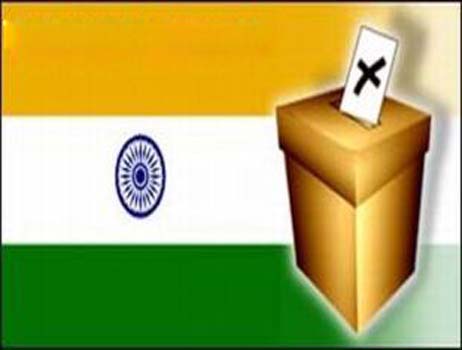In age of alliances, small Indian parties play big role
 New Delhi - Grandmaster-level chess is a snap compared to the calculations and combinations involved in India's 15th general election.
New Delhi - Grandmaster-level chess is a snap compared to the calculations and combinations involved in India's 15th general election.
Seven national parties, 47 regional parties and more than 400 smaller parties are engaged in frenetic activity, building and breaking pre-poll ties in efforts to come up with a winning combination in the mammoth electoral exercise beginning April 16.
The Indian National Congress party, which played the lead role in India's freedom movement and after its independence in 1947, has held a parliamentary majority for 30 years.
But that is history, as are the years when a cohesive opposition put up a spirited fight against Congress.
No single party has won a majority of 272 seats in India's 545-member Lok Sabha, or lower house of Parliament, since 1984.
For most of the past two decades India has been ruled by coalition governments of multiple parties, often unstable and unable to pull together through a full five-year term.
The shrinking clout of the two main national parties, Congress and its rival Hindu nationalist Bharatiya Janata Party (BJP), has come back-to-back with the growing power of regional and smaller parties.
These myriad parties represent India's diversity and the sectional aspirations of communities who identify themselves according to their region, language, caste and community.
Many analysts see the proliferation of these smaller parties as a natural progression of Indian democracy - the expression of regional, caste and other identities that were suppressed in the first 40 years of independence.
"The entire business of regionalism is good for the polity," said political scientist Yogendra Yadav of the Delhi-based Centre for the Study of Developing Societies. "We keep thinking as if it's Britain. We have to begin thinking of ourselves as Europe."
The state-level parties represent distinct languages and cultures and some of them, with populations of 20 million to 120 million, are like large countries, Yadav added.
The presence of strong state-level parties in Parliament, their participation in, or support to, a coalition federal government makes policy-making and governance more democratic.
A recent opinion poll by the India Today newsmagazine suggests the 15th general election is set for a photo-finish with not two but three fronts sharing the bulk of seats in near equal measure.
The two main alliances are the governing United Progressive Alliance (UPA), led by Congress, and the National Democratic Alliance (NDA), led by the BJP. Both have run stable coalition governments for five-year terms.
Going into the 2009 election, both the UPA and the NDA have lost some allies but hope to regain them and win others if they do well.
The third front comprises a still changing group of smaller parties, which includes regional aspirants from southern India and leftist parties.
It is not yet clear whether the Bahujan Samaj Party (BSP) - representing Dalit or lower caste voters - which is a national party with its voter base restricted largely to the politically important northern Uttar Pradesh state, will go with the third front.
But both the BSP, led by Uttar Pradesh Chief Minister Mayawati, and the left grouping are hoping to get numbers that give them a say in the formation of the federal government.
The leader of the single-largest party in the Lok Sabha is usually invited to form the government but has to prove that he or she has the support of a majority of lawmakers.
Some constituents of the UPA and the NDA have been hobnobbing with third front organizers and have indicated they may switch allegiance after the elections, depending on who scores what.
Just to give an idea of how fluid the ground realities are in the pre-election electoral tie-ups scene, a group of three parties, two of which are constituents of the UPA and one a supporter, have formed an alliance within the Alliance in Uttar Pradesh and Bihar states from which the Congress party has been kept out.
Both the Congress and BJP leaderships are dismissive of the third front and talk of a resurgence by their parties.
Off the record, leaders are more realistic. They accept that there could be a lot of arithmetic ahead, not much of it based on ideology.
The leaders claim, and this is supported by analysts, that it would be difficult to form a stable federal coalition government without the support of either the Congress party or the BJP.
The leftist parties, who are leading the third front initiative, want a non-Congress, non-BJP government. And, they insist it can be stable.
"You need to work out a common minimum programme of all the parties and stick to it," Communist Party of India (Marxist) leader Brinda Karat said.
At the end of the day, it looks like coalitions are a given. Pre-poll parleys aimed at winning votes are expected to give way to hard bargaining for post-poll alliances aimed at forming a government once results are announced on May 16. (dpa)